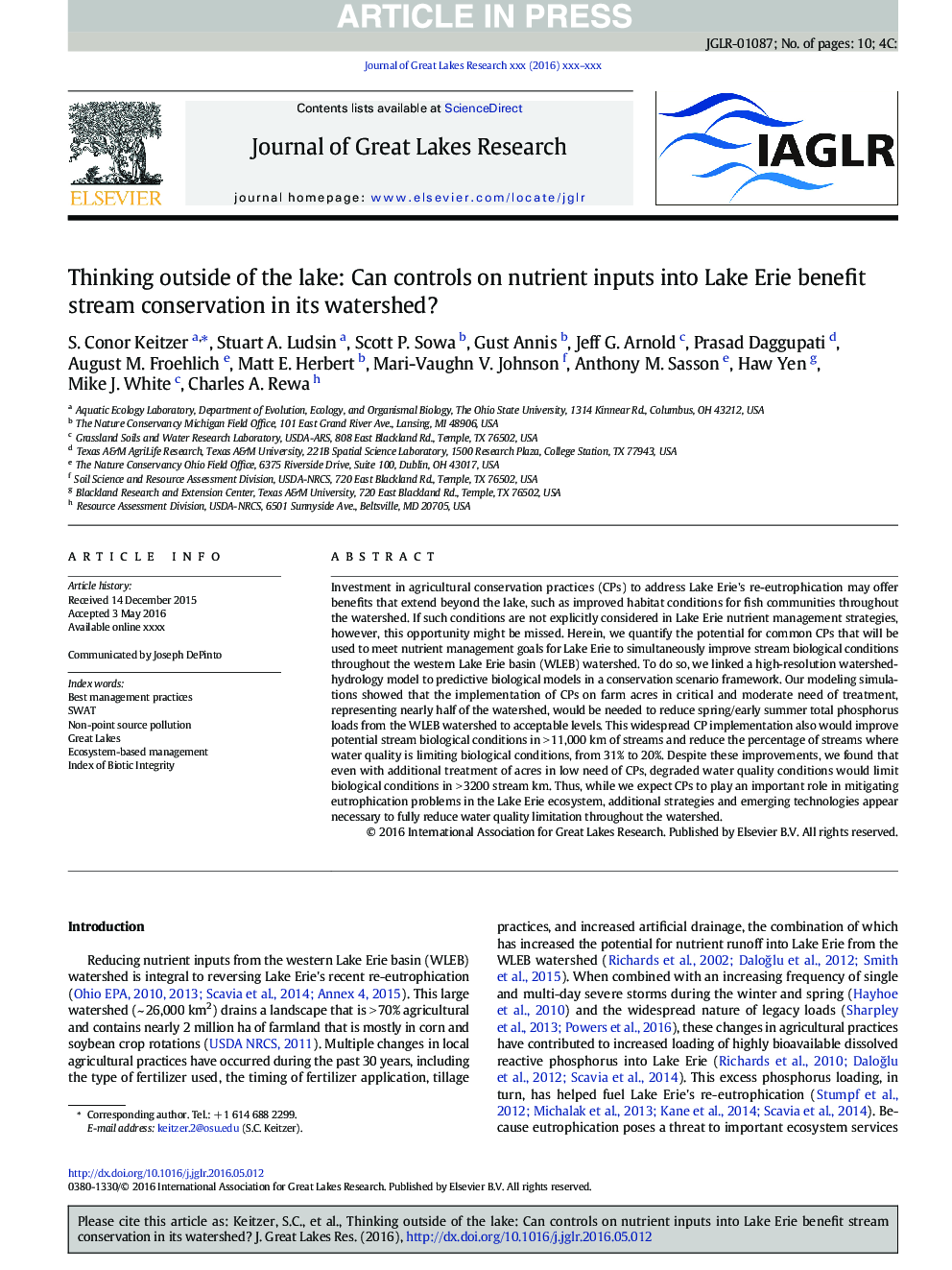| Article ID | Journal | Published Year | Pages | File Type |
|---|---|---|---|---|
| 5744702 | Journal of Great Lakes Research | 2016 | 10 Pages |
Abstract
Investment in agricultural conservation practices (CPs) to address Lake Erie's re-eutrophication may offer benefits that extend beyond the lake, such as improved habitat conditions for fish communities throughout the watershed. If such conditions are not explicitly considered in Lake Erie nutrient management strategies, however, this opportunity might be missed. Herein, we quantify the potential for common CPs that will be used to meet nutrient management goals for Lake Erie to simultaneously improve stream biological conditions throughout the western Lake Erie basin (WLEB) watershed. To do so, we linked a high-resolution watershed-hydrology model to predictive biological models in a conservation scenario framework. Our modeling simulations showed that the implementation of CPs on farm acres in critical and moderate need of treatment, representing nearly half of the watershed, would be needed to reduce spring/early summer total phosphorus loads from the WLEB watershed to acceptable levels. This widespread CP implementation also would improve potential stream biological conditions in > 11,000 km of streams and reduce the percentage of streams where water quality is limiting biological conditions, from 31% to 20%. Despite these improvements, we found that even with additional treatment of acres in low need of CPs, degraded water quality conditions would limit biological conditions in > 3200 stream km. Thus, while we expect CPs to play an important role in mitigating eutrophication problems in the Lake Erie ecosystem, additional strategies and emerging technologies appear necessary to fully reduce water quality limitation throughout the watershed.
Keywords
Related Topics
Physical Sciences and Engineering
Earth and Planetary Sciences
Earth and Planetary Sciences (General)
Authors
S. Conor Keitzer, Stuart A. Ludsin, Scott P. Sowa, Gust Annis, Jeff G. Arnold, Prasad Daggupati, August M. Froehlich, Matt E. Herbert, Mari-Vaughn V. Johnson, Anthony M. Sasson, Haw Yen, Mike J. White, Charles A. Rewa,
